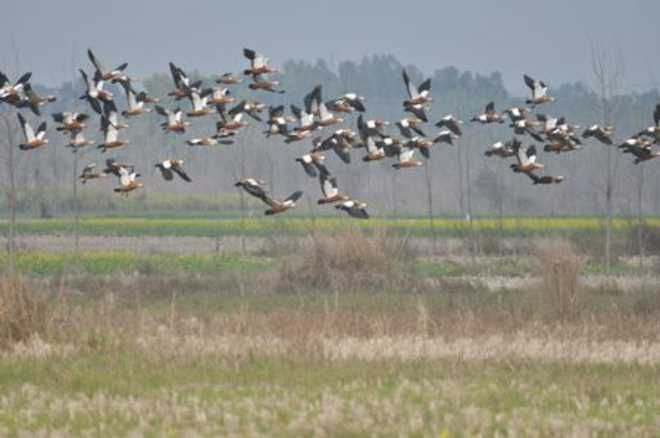
Migratory birds at the Keshopur wetland in Gurdaspur. A Tribune photo
Ravi Dhaliwal
Tribune News Service
Gurdaspur, January 28
Efforts of the authorities to regain the glory of Keshopur Chamb, one of Asia’s biggest wetlands, seem to be bearing fruit. The bird census conducted last week by five NGOs in collaboration with Pathankot district wildlife officials has pegged the number of avian visitors who made the area their temporary abode this year at a whopping 20,471.
These NGOs are Chandigarh-based Avian Habitat and Wetland Society and Chandigarh Bird Club, internationally renowned World Wildlife Federation (WWF), Jagran Sansthan Society, Nangal, and the Punjab Heritage and Tourism Board. The efforts of these NGOs were coordinated by Rajesh Mahajan, Divisional Forest Officer (DFO), Wildlife, Pathankot.
The high bird count in Keshopur is in stark contrast to the declining number of birds visiting the Ropar and Nangal wetlands. In 2014, the number of birds that visited Keshopur was 18,500 and in 2013, the count was 8,500. In 2012, the count was as low as 6,200. The figure had raised an alarm among both ornithologists and wildlife officials.
Mahajan said this year, some endangered species had been spotted by the NGOs during the course of the census. “After many years, we were lucky to have spotted rare birds such as the painted stork, black headed ibif, ferruginous porchard, red crusted porchard and the northern lapwing. We will conduct the census next year as it helps us understand various aspects related to birds,” said the DFO.
He added that the birds spotted this year belonged to 71 species. He attributed the significant increase of birds to the removal of water hyacinth, following which the surface area for birds to create their habitats increased. “The area brought under elephant grass too has been increased. Moreover, we have planted about 3,000 trees to make the area more conducive for the stay of migratory birds,” said a wildlife official engaged in the project of removing water hyacinth.
“For the past one year, we have been putting our energy into removing the deadly water hyacinth in the wetland. Water hyacinth is a free-floating perennial water plant that forms large, dense mats on the water surface. Each plant consists of several broad, leathery leaves and spongy, inflated leaf stalks. Water hyacinth is one of the world’s worst aquatic weeds. It infests rivers, dams, lakes and irrigation channels. It devastates aquatic environments, like it was doing here at the wetland. Moreover, it was eliminating native aquatic plants, apart from blocking irrigation and natural water channels in Keshopur,” said Mahajan.



























